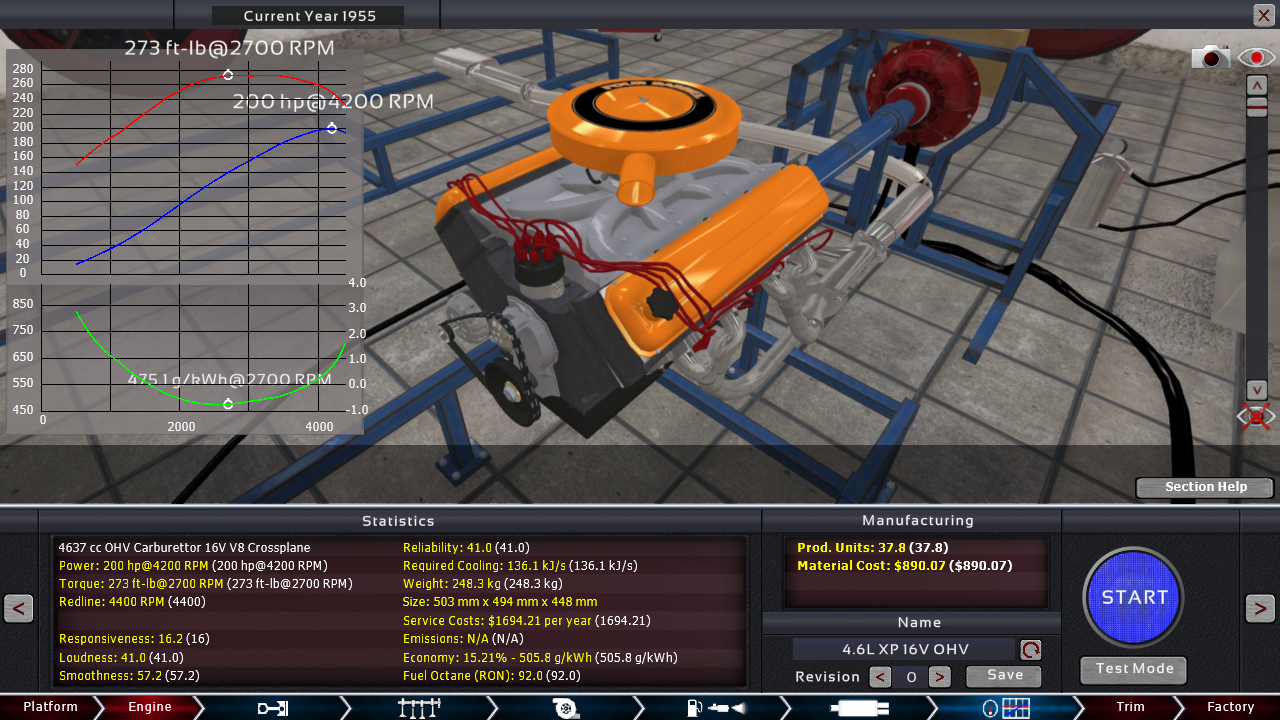Looking for Input on These Muscle Car Engines









Supercharged

Posts: 1983
Joined: Wed Feb 05, 2014 2:07 pm
Location: Northeast USA
Cars: 2006 Scion Xb
nialloftara wrote:Now this is just my take, but for muscle cars I'd say the cam profile is too aggressive. Only engines like the 426 hemi had torque peak above 4000 rpms, it might cost some hp but try backing off the cam profile till torque peaks between 2000-3500 rpms, that's a more accurate power band. Also remember that those old engines used gross hp ratings where as this game is in net, gross rating is around 20-30% higher than net.
Silver Supporter

Posts: 269
Joined: Fri Sep 09, 2011 12:48 pm
Location: California
Cars: Scion FR-S
oppositelock wrote:Any reason for the 1955 tech year?
Muscle cars really didn't hit their stride until the mid to late 60's, using a later tech year would allow you to increase displacement and/or revs to give you the power you're looking for without being unrealistic. I also have to agree about using a smaller cam, those peaky torque curves just aren't right for these types of engines.
Supercharged

Posts: 1983
Joined: Wed Feb 05, 2014 2:07 pm
Location: Northeast USA
Cars: 2006 Scion Xb
Silver Supporter

Posts: 269
Joined: Fri Sep 09, 2011 12:48 pm
Location: California
Cars: Scion FR-S

oppositelock wrote:With the right mix of cam (44) and ignition (55) I was able to get a nice little torque plateau. It's not ultra powerful, but 200 hp is pretty decent for 1955, and the single four barrel keeps material costs low.
Supercharged

Posts: 2104
Joined: Sat Jan 04, 2014 8:25 am
Location: United States of America
Cars: 1995 Mitsubishi 3000GT SL,
1994 Mercedes-Benz S600
DeltaForce wrote:Also, when did the transition from pushrods to overhead cam technology start for American automobiles? Obviously it wasn't in the muscle car era, but when would it be appropriate to consider making the change on production engines?
Supercharged

Posts: 1983
Joined: Wed Feb 05, 2014 2:07 pm
Location: Northeast USA
Cars: 2006 Scion Xb
Return to Engine Sharing Forum
Users browsing this forum: No registered users and 0 guests